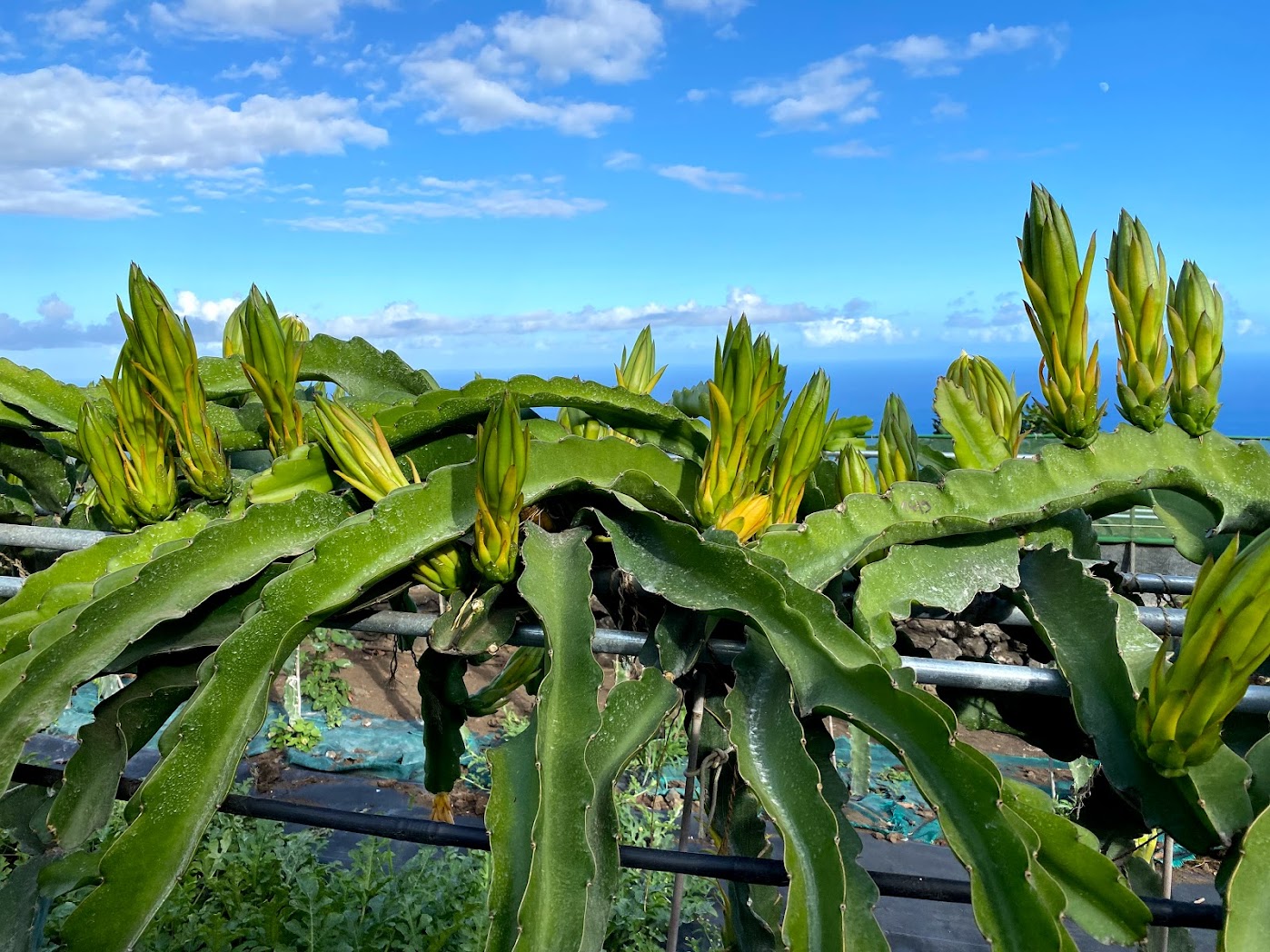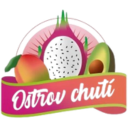Dragon Fruit (Pitaya) and How It Grows
Dragon fruit, also known as pitaya, is a heat-loving plant naturally grown in tropical and subtropical regions – for example, in Central and South America or on our farm on the Canary Islands. It needs plenty of sunlight, temperatures above 15 °C, and a frost-free sheltered location. Despite loving warmth, it’s surprisingly resilient and adaptable – with a bit of care, you can even grow it at home as an ornamental plant in a pot. Thanks to its appearance and flowers, it’s a stunning addition to any greenhouse, sunroom, or sunny windowsill.
If you plan to grow pitaya at home, keep in mind that it’s a climbing plant. Without support, it will spread along the ground, which is not ideal for maintenance or fruit quality. Provide a strong support early on – like a stake, trellis, or wall – so it can grow upwards.
Dragon fruit grows on a climbing cactus, which in nature climbs on trees or rocks. For cultivation, the shoots need to be trained upward using vertical support so the plant can develop a rich crown and avoid contact with the ground, which increases the risk of rot and complicates harvesting.
On our farm, we grow dragon fruit in rows using a special support structure that allows the plants to grow upwards and spread out their crowns. Without this support, the stems would crawl along the ground, making harvesting and maintenance much harder. Ground contact also increases the risk of fungal diseases due to poor airflow and humidity. Vertical training ensures healthier plants, higher yields, and easier farm management.
Pitaya thrives in warm, slightly humid climates (16–25 °C). It does not tolerate frost or extreme heat. It requires plenty of light but also benefits from partial shade (around 30%).
The ideal soil is sandy loam, slightly acidic (pH 5.5–6.5), well-draining, and rich in organic matter. Irrigation is only needed in the first few years and during flowering.
Pitaya is a perennial climbing cactus that can grow up to 2 meters long. It has two types of roots:
- Primary roots: thin, shallow roots with an absorption function
- Secondary roots: aerial roots that provide support
The stems are green, juicy, triangular, and have spines. From the areoles, flowers emerge – hermaphroditic, large, white or pink – which open at night.
Fruits and Varieties
Dragon fruit can have white, pink, red, or deep red flesh. It is always filled with small edible black seeds and has a refreshing taste similar to kiwi and pear.
Diseases
- Stem rot (Erwinia carotovora): Watery rot that destroys the plant. Prevention: hygiene, removing infected parts.
- Anthracnose (Colletotrichum sp.): Sunken dark spots on stems and fruits. Prevention: good drainage, dry conditions.
- Botryosphaeria (“fish eye”, Dothiorella sp.): Small brown spots with an orange center. Prevention: use healthy plants, disinfect tools.
Pests
Ants are the biggest issue – they attack buds and leaves. Sticky traps, chili sprays, and timely action without pesticides work well.
Names: Dragon Fruit, Pitaya or Pitahaya?
This exotic fruit goes by many names depending on language, region, and tradition. The terms pitaya and pitahaya originate from Central America and refer to the fruits of climbing cacti. “Pitahaya” is more common in Spanish, while “pitaya” is widely used in English and Czech.
Dragon fruit is a modern English name inspired by the appearance of the fruit – its skin resembles dragon scales. This is the most used term in global trade. Regardless of which name you encounter, they all refer to the same fruit – the fruit of cacti from the Hylocereus or Selenicereus genera, known for their striking looks and refreshing taste.

